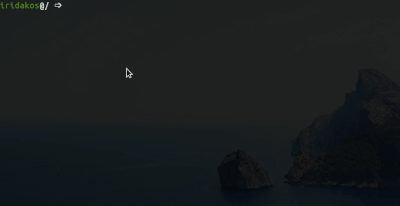131 private links
Drill is a new file search utility that uses "clever crawling" instead of indexing, for Linux, Windows and macOS.
Virtual Hard Disk (VHD) is a disk image file format which represents a virtual hard disk drive, capable of storing the complete contents of a physical hard drive.
In a recent article, we talked about Gogo – a tool to create shortcuts for long paths in a Linux shell. Although gogo is a great way to bookmark your favorite directories inside a shell, however, it has one major limitation; it lacks an auto-completion feature.

Because of the above reason, we went all out to find a similar utility with auto-completion support – where the shell can prompt with suggestions of the available aliases (shortcuts to long and complicated paths) and luckily, after crawling through Github, we discovered Goto.
Goto is a shell utility to quickly navigate to aliased directories, with support for auto-completion. It comes with a nice auto-completion script so that once you press the tab key after the goto command or after typing a few charters of an existing alias, bash or zsh prompts with suggestions of the aliases or auto complete the name, respectively.
Goto also has additional options for unregistering an alias, expanding an alias’s value as well as cleaning up aliases of deleted directories. Note that goto’s auto-completion only works for aliases; it is separate from shell auto-completion for commands or filenames.
A bittorrent filesystem based on FUSE.
With BTFS, you can mount any .torrent file or magnet link and then use it as any read-only directory in your file tree. The contents of the files will be downloaded on-demand as they are read by applications. Tools like ls, cat and cp works as expected. Applications like vlc and mplayer can also work without changes.
This tutorial shows how to use eCryptfs to encrypt a directory on Ubuntu 16.04. eCryptfs is a POSIX-compliant enterprise-class stacked cryptographic f...
This guide shows how you can install and use incron on a Debian 8 (Jessie) system. Incron is similar to cron, but instead of running commands based on time, it can trigger commands when file or directory events occur (e.g. a file modification, changes of permissions, etc.).
Interesting approach to quick filesystem navigation.
Automated tools like autojump, z, and fasd address this problem by offering shortcuts to the directories you often go to. The author of this shell hack prefers a more manual solution, which provided quite an increase in efficiency with this.
Tagxfs is a semantic file system. It extends the user space file system to a tag based hierarchy.
Imagine that you want to add a new folder to your existing folder structure. But semantically it belongs into more locations, e.g. you have the trailer for the movie 'Indiana Jones 4' and existing a folder structure (ref.1.1). It belongs in the folder Adventure and also in 2000s (production year 2008).
TMSU is a tool for tagging your files. It provides a simple command-line tool for applying tags and a virtual filesystem so that you can get a tag-based view of your files from within any other program.
TMSU does not alter your files in any way: they remain unchanged on disk, or on the network, wherever you put them. TMSU maintains its own database and you simply gain an additional view, which you can mount, based upon the tags you set up. The only commitment required is your time and there's absolutely no lock-in.
tagfs - Fuse tag file system. unfortunately it seems be able to tag at directory level only.
GMail Filesystem over FUSE
There is a Debian package which allows you to use GMail storage as a filesystem written by a nice guy named Richard Jones. He has a nice web site dedicated to it.
But, this implementation uses is based on something called libgmail which accesses GMail via its web interface. Unfortunately, that web interface changes constantly and libgmail not been able to keep up with the flux and is not working any more.
So, I went and stole Richard's code and improved it. Instead of using libgmail, I just used python's imaplib. GMail's IMAP interface should be pretty darn stable and not likely to break.
